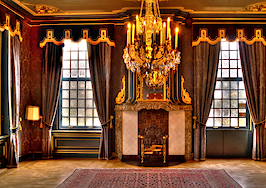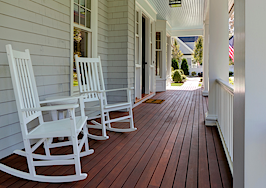Looking for more advice? Check out Inman’s New Agent Essentials.
American housing styles have changed, and continue to change, throughout the country and as homeowners’ tastes and lifestyles have evolved. As the country has undergone industrial and economic changes, both good and not so good, housing styles have adapted out of necessity.
In this new series, I will walk you through the predominant housing styles of the past 12 decades, beginning in 1900. A basic understanding of each architectural style that defines a decade will position you as a knowledgeable agent with your clients and make searching for a home with your buyers easier for everyone.
From the vantage point of 100+ years, talking about “the modern age” may seem comical, but that is how the 1920s are known. Housing styles took a sharp turn away from traditional styles and, with the introduction of the Art Deco design style from France, a new age in home architecture came on the scene.
Art Deco was first seen primarily in commercial buildings in New York, such as the Chrysler Building. In 1922, Chicago’s Tribune Headquarters was another example of the Art Deco style on a grand scale.
Glamour and sophistication are the feelings most associated with Art Deco. Interiors were characterized by geometric lines, bold colors and statement mirrors. Metals, particularly chrome and aluminum, are seen both inside and outside houses in the 1920s as opposed to wood and brick. Neo-Gothic buildings, featuring the pointed Gothic arch, were characterized by decorative finials, patterns on interiors and exteriors, and scallops in brickwork and woodwork.
The so-called “Roaring Twenties,” a period of rebellious thought, and the avant-garde movement in art and design, reinforced the introduction of Art Deco. New technologies in materials, plumbing and heating were incorporated into the Art Deco-style home.
Eclectic, not pure, design incorporated both modern and classical design elements, deliberately breaking with traditions that existed prior to World War I. Beaux-Arts aspects of Art Deco incorporated neoclassical French and Italian styles.
Art Deco can be called a pastiche of styles in its determination to avoid direct historical references. It is one of the most influential decorative styles of the first half of the twentieth century. Functionalism and purified architectural forms exhibiting radical extremes are parts of the Art Deco vocabulary.
Coinciding with Art Deco, introduced by Walter Gropius in Germany circa 1919, is the Bauhaus Movement. Purity of form and the reality of nature are other facets of the Art Deco Style.
While the 1920s Art Deco style combines several aesthetics, what does the actual 1920s home look like? Servants and multiple generations living in one house became less and less commonplace. Streamlined interiors that were easy to care for became a priority and modern kitchens with newer streamlined appliances, including washing machines, were in evidence.
Homes now had telephones, and “nooks” to house a phone, some with built-in seating, were elements in new houses. Often located between the bedrooms and the bathroom, telephone nooks were niches in the wall with a box below the small shelf to hold the phone.
The first residential telephones were too small to house the phone’s ringer and other electronic parts, so these parts were housed in a separate box, which was screwed into the back of the lower compartment. A cord connected the two parts of the phone and the shelf conveniently held the phone book and pencil and paper for messages. A telephone nook is a sure sign of a 1920s house.
Garages were rarely seen in Art Deco houses, despite cars starting to become available. Homeowners who owned cars parked on the street near their homes.
Realtors who can identify historical elements of homes from different periods can easily converse with their clients about why houses are configured or designed as they are. If historical styles are important to buyers, the Realtor who can discuss them has an advantage. If buyers are looking for more contemporary or up-to-date houses with modern amenities, the informed Realtor only has to look at the age of the house to determine if it will work for their buyer.
Gerard Splendore is a licensed associate real estate broker with Warburg Realty in New York. Connect with him on LinkedIn.













